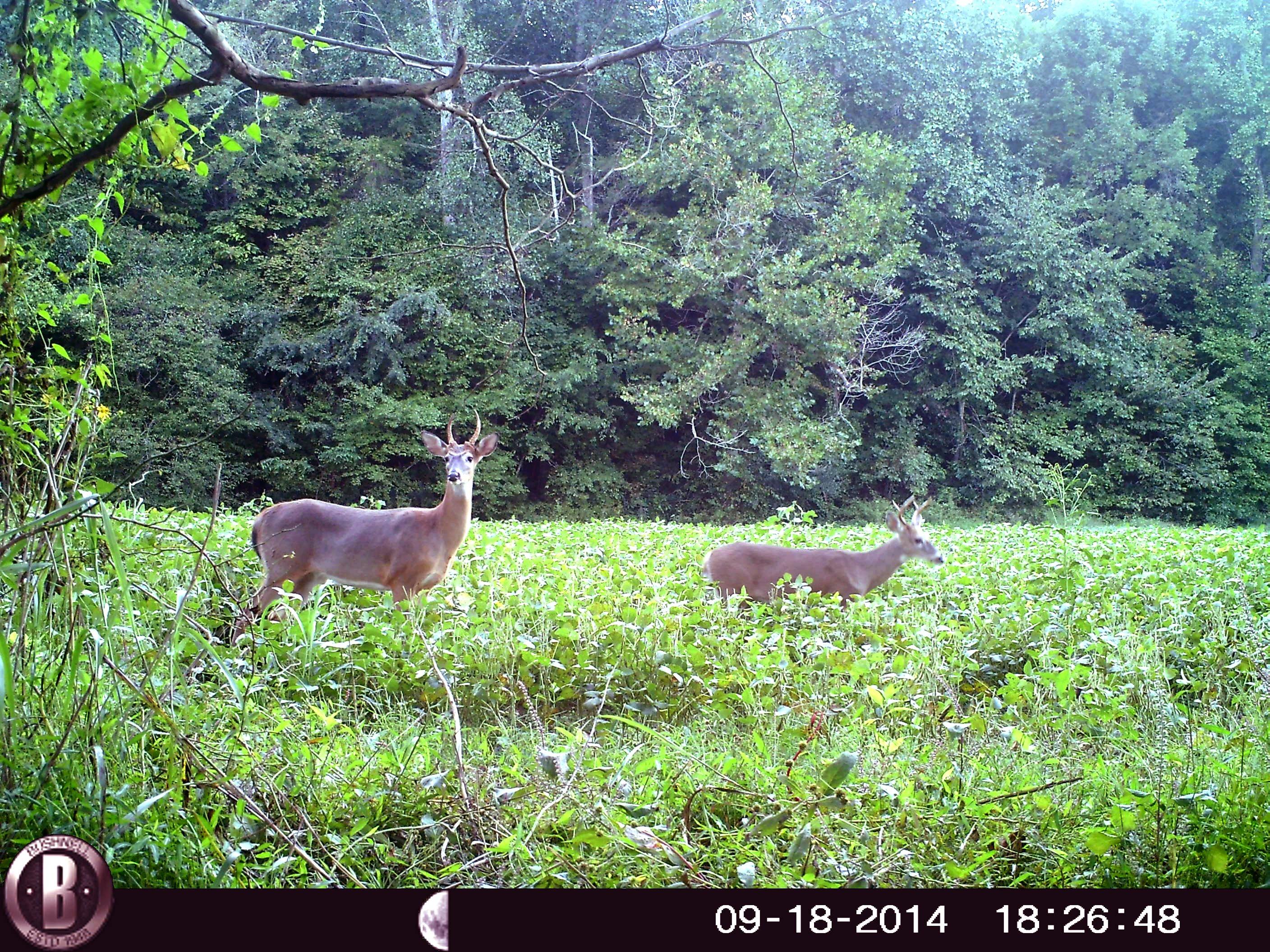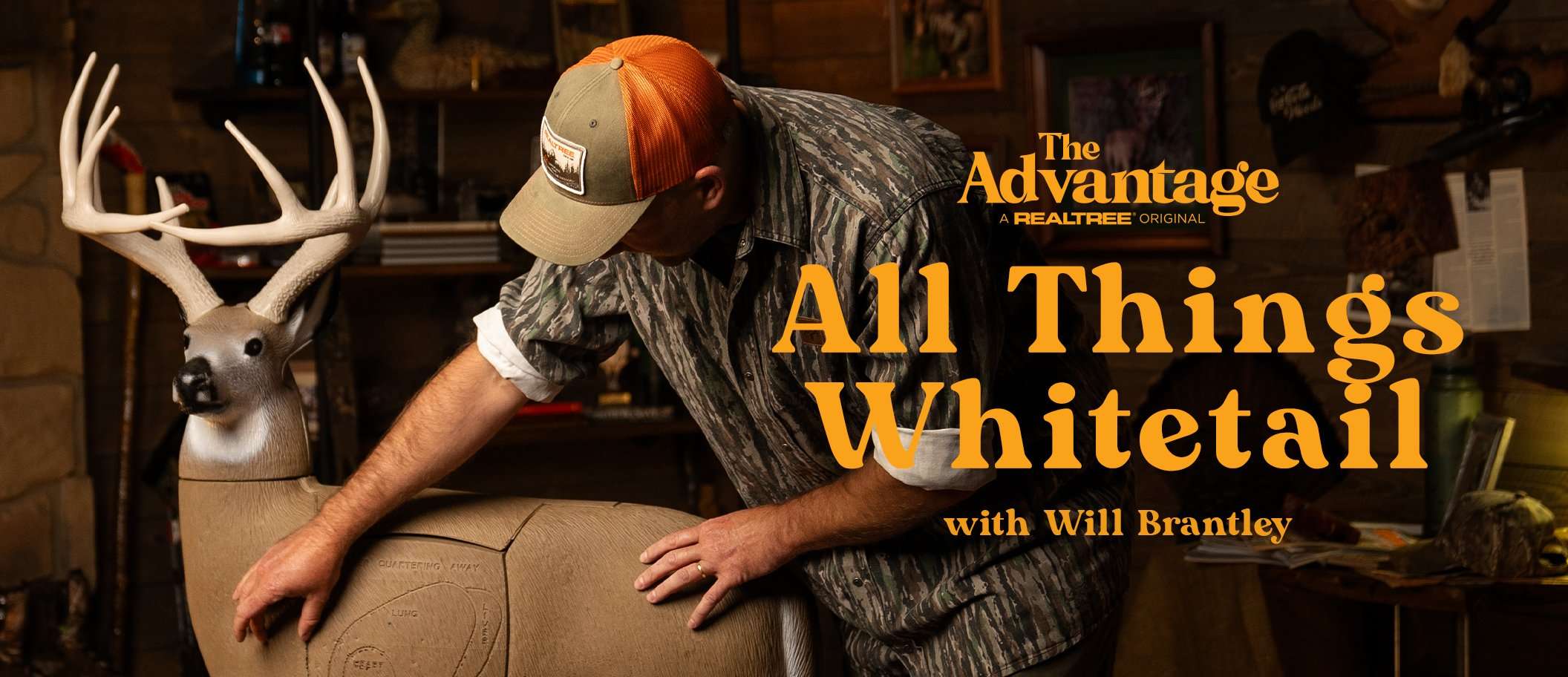Does this heavy deer prove the once-a-spike-always-a-spike claim? What about other spike-related questions?
Whitetail racks serve as significant conversation fodder. From typical antlers to nontypical traits, big antlers to small antlers, and buttons to Booners, we love talking about deer antlers. And that includes the infamous spike buck. Which leads us to four important questions about Alabama 11-pointers.

Here are two bucks with “yearling” racks. But one is significantly bigger-bodied. What’s going on here? Image by Josh Honeycutt
Question No. 1: Will a Spike Always be a Spike?
“Once a spike, always a spike.” We’ve all heard it from someone.
Let’s rule that claim 100% false.
“The once-a-spike-always-a-spike myth is just that — a myth,” said Kip Adams, chief conservation officer for the National Deer Association. “Trophy-book whitetails are more common than mature spikes.”
Further, according to former QDMA CEO and current HuntStand biologist Brian Murphy, it’s one of the easiest whitetail falsities to debunk, thanks to extensive research.
Question No. 2: What’s Causes Spike Antlers?
Given how much deer hunters like to rip on spike bucks, it’s important discuss the primary causes of 2-pointers. According to Murphy, yearling spikes are a result of late-born fawns or poor nutrition. That occurs regardless of genetic antler potential.
“Spike antlers are nearly always the result of nutrition and age,” Adams said. “Most spikes are yearling bucks that would benefit from additional nutrition and express increases in both body size and antler growth.”
Murphy made it clear that if a buck fawn is born too late, it’ll be a spike no matter what else happens. “Interestingly, Dr. Harry Jacobson at Mississippi State University compared various birthing groups of buck fawns,” he said. “In one study, the earliest-born fawns produced 0% spike bucks. In contrast, the latest-born fawns produced 100% spike racks for their first set of antlers.”
Numerous research projects have shown that poor nutrition also leads to spike racks. Significant drought achieves the same. That leads to the next question.
Question No. 3: Can a Spike Buck Catch Up?
Can a spike buck’s antlers catch up through time? Will a spike be as good at maturity as its yearling cohorts with branched antlers? Research from Texas A&M and Mississippi State University addressed that.
“I think this has largely been put to bed, but whether spikes will be as good as their multi-pointed cohorts is the real question,” Murphy said. “This depends on several factors.”
If a spike is a spike because of a later birthday or a temporary factor, such as a seasonal food or water shortage, it can bounce back. “I have photos of a 150-inch 8-point that started as a spike at the UGA deer pens,” Murphy said.
But if age or nutrition isn’t the limiting factor, the deer likely won’t. “Where you have good nutrition [and] on-time fawning, yearling bucks with spike antlers, on average, won’t catch up to their fork-antlered cohorts at maturity,” Murphy said. “One study on the King Ranch showed that spikes that experienced good antler growth conditions and circumstances tend to score about 10 to 15 inches lower at 5-½ than their [once] fork-antlered yearling cohorts.”
Question No. 4: What’s Up with This Monster Spike?
Given all that, what’s up with the monster-bodied spike pictured in this blog? There’s no chance that’s a yearling whitetail, right? Murphy aged the deer at 2-½ years old. So did Adams.
“He is a large-bodied deer, but given that his hind quarters are larger than his front end, and his neck is very slim, I think he’s 2-½ years old,” Adams said.
Even at 2-½, that’s a pretty rare occurrence, especially considering the straight-up (not curved) nature of its antlers. “The number of 2-½-plus-year-old spikes is very rare,” Murphy said. “There are some cow-horn spikes that are 2-½ to 5-½-year-old bucks, but there aren’t many.”
So, it looks like the spike here is a second-year spike. Maybe that’s because of genetics. And the buck won’t likely catch up to other bucks in its age class. Perhaps it was actually that one-in-a-million once-a-spike-always-a-spike buck. Maybe it wasn’t. Either way, it’s a monster-bodied spike.
Don’t Miss: ARE NEIGHBORHOOD DOGS RUNNING DEER? WHAT HUNTERS CAN DO












